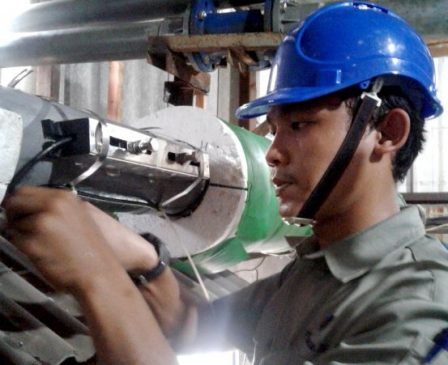Flow Meter Type Comparison When compared with traditional mechanical air meters, electromagnetic air meters and ultrasonic air meters have the advantages of low initial flow rate, range ratio, high measurement accuracy and stable wide operation.
Flow Meter Comparison Based on Application
There are no moving parts and flow-blocking components inside, and it is not affected by impurities in the water and has a long service life. The output communication function is completed, meeting various communication and wireless network needs. It has excellent small flow detection ability, can solve many problems of traditional water meters, is more suitable for water charge gradient filling, DMA zone measurement, and is more suitable for water resource saving and rational utilization, and has a broad market and application prospects.
Limitations of Ultrasonic Water Meter

In principle, ultrasonic water meters are fully electronic water meters manufactured with industrial grade electronic components using the ultrasonic time difference principle. Since ultrasonic water meters rely on reflection to check flow, they are susceptible to interference from bubbles, dirt, ultrasonic noise from pumps and other sound sources, which affect measurement accuracy and have poor anti-interference performance.
Straight pipe sections are indispensable, 20D in front and 50D in back, otherwise the dispersion is poor and the measurement accuracy is poor. In addition, the contamination of the measuring pipe will greatly affect the measurement accuracy and cause significant measurement errors.
Electromagnetic Flow Meter

Solve Three Problems Ultrasonic Water Meter
Electromagnetic water meters are made according to Faraday’s principle of electromagnetic induction. The principle dictates that electromagnetic water meters are less affected by bubbles and fouling. At the same time, the electromagnetic water meter adopts advanced technology without the requirement of straight pipe, which expands the scope of application.
In addition, the electromagnetic water meter specially designed sensor excitation system and high performance lithium battery power supply system, and adopts ultra-micro power processor, has the characteristics of full digital signal processing, stable measurement, high accuracy and strong anti-interference. capabilities. Take the intelligent electromagnetic water meter as an example.
This water meter is designed for individual water applications such as water intake, pipeline distribution, metering and filling, and irrigation. It can measure a flow rate of 5mm/s with a low initial flow rate and a high range ratio (high R value) up to 1:400. Under the premise of not compromising measurement accuracy, low power operation is guaranteed, and the product is battery powered, with a long service life. use more than 6 years and continuous working time more than 8 years.
At the same time, the battery-powered electromagnetic water meter can be installed anywhere without the need for an external power supply. In addition, it also has intelligent information and high measurement performance, easy to install and save users’ investment.
Applications and Restrictions
Both magmeters and ultrasonic flow meters can be used for a variety of water and wastewater applications, including the measurement of slurries, slurries, and some chemicals. Magmeter performance is not affected by temperature, pressure or viscosity. These meters can handle rapid flow changes. They can accurately measure clean liquids such as drinking water or those with heavy solids such as sewage lifting stations and biosolid facilities.
However, magmeters cannot measure non-conductive liquids such as oil, steam or gas. Magmeters can measure flow that flows vertically or horizontally. With today’s high-resolution microprocessors, they can measure flows as low as 0.2 to 0.3 feet per second.
Ultrasonic meters can measure both conductive and non-conductive liquids. This meter may have problems measuring liquids with suspended solids, debris, or air bubbles, which interfere with the sound signal path. Temperature compensation may be required to maintain accuracy. Corrosion, holes, or biofilm buildup on the pipe walls can also cause problems.
Installation Factors

Ultrasonics and magmeters can be installed on a wide variety of pipe materials and sizes, from inch diameter to over 100 inches. For narrow locations or retrofit projects, magmeters require pipes that are not too straight to avoid inaccuracies from flow disturbances. Full-bore magmeters require only one upstream and two downstream long diameters, whereas ultrasonic meters typically require five upstream and 10 downstream.
Maintenance
Magmeters have no moving parts and require no maintenance. Ultrasonic meters also have no moving parts. This type of clamp requires material between the sensor and the pipe to transmit sound properly. This material degrades over time and needs to be replaced. Also, the clamps sometimes have to be tightened. Both types of meters have problems with lightning strikes and power surges.
Accuracy Magmeters are highly accurate, with an inaccuracy of ±0.5 percent or less. In comparison, ultrasonic meters have an inaccuracy rate of ±1 to 2 percent.
